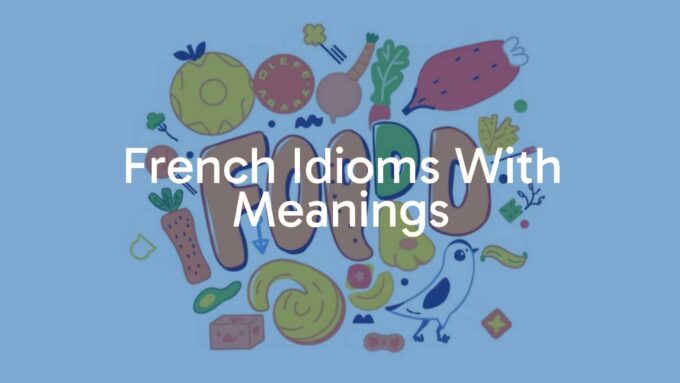French texting abbreviations are the quick shortcuts and acronyms people use in their digital conversations. Just like English text slang, they help people say more with fewer letters, making chatting faster and easier. Whether people are sending texts or posting online, these abbreviations are a big part of how French speakers communicate today. If you want to really join in on French conversations online, knowing these shortcuts helps you understand and fit in with informal, everyday language.
Schools often teach formal French, but real-life talking and texting-especially among young people-is much more relaxed. French speakers love using slang in both speaking and writing. Learning these texting short forms isn’t just about saving time; it helps you follow jokes, keep up with fast chats, and sound more like a real insider in French conversations.
What Are French Texting Abbreviations?
Where They Come From and How They Changed Over Time
Texting abbreviations aren’t unique to French, but French speakers created their own versions when mobile phones first appeared. Early text messages could only be 160 characters long, so people learned to drop extra letters, skip vowels, and use numbers or symbols to replace sounds and words. These small changes soon became a new way of writing.
Now that new apps let you type as much as you want, people still use these short forms out of habit and for quick replies. Over time, this way of writing developed into its own style, spreading everywhere from chat apps to social media. The list of abbreviations keeps growing as new ones pop up, but the main ideas behind them stay the same.
How French and English Shortcuts Are Different
People everywhere want to type quickly and easily, but the actual abbreviations often look different in each language. French texting shortcuts are based on the way French sounds and how its words are built. For instance, English uses “LOL” for “laughing out loud,” but French uses “mdr” (mort de rire-dying of laughter). Where English has “pls” for “please,” French has “stp” or “svp.”
French users also like to use numbers and symbols in their own ways. English sometimes uses “2” for “to” or “too,” while French uses “2” for “de” and “1” for “un,” “en,” or “in.” The “+” sign stands for “plus,” like in “A+” (“à plus tard,” meaning “see you later”). Dropping accents and using all lowercase letters are common too-mainly to type faster, not because people can’t spell. Since these shortcuts are made for French, it can be hard to translate them directly into English.

Why Do People Use French Texting Abbreviations?
Typing Is Faster and Easier
The main reason people use French texting shortcuts is to type as quickly as possible. When messages were short and phone keyboards were slow, taking out extra letters made sense. Even with better phones and features today, the habit stuck-short forms keep chats moving.
For example, “s’il te plaît” becomes “stp,” and “aujourd’hui” shortens to “ajd.” These versions save time and effort, which matters most in fast-paced conversations-like texting, group chats, or live chats-where everyone wants quick back-and-forth replies.
Making Things Friendly and Relaxed
French texting abbreviations also help set a laid-back, informal tone. Just like using slang when speaking, shortcuts in writing show the chat is between friends or people who know each other well. For example, saying “cc” instead of “bonjour” feels warmer and less serious.
Using these forms makes conversations feel closer and more familiar. If you leave them out, messages might seem stiff or formal. It also shows you’re comfortable with how French people usually talk online.
Fitting Texting to Phones and Social Media
Phone texting and social networks helped make shortcuts popular. Early text messages were very short, and even now, some apps or platforms prefer or encourage shorter posts. Writing with abbreviations matches the quick, back-and-forth style of online talks.
On social media, especially, people value short, direct messages. A sentence full of abbreviations is likely to get faster replies and more attention. Using the typical styles of each app helps French speakers join in and keep up with all types of online chats.
How Do French Texting Abbreviations Work?
Usual Approaches and Tricks
French texting shortcuts may seem messy at first, but they follow common patterns. One favorite trick is removing letters, especially vowels. French also likes making acronyms, where only the first letters are kept. On top of that, French texters often swap in numbers or symbols that sound like parts of the word they replace.
Another method is to just cut the end off a long word. The goal is always to type less while still making it clear what you mean. These mixes of abbreviating, using sounds, and chopping words down are the basics of French text language.
Examples of Dropping Letters and Sound Substitutions
The simplest trick is taking away most vowels and sometimes other letters too. For example, “bcp” means “beaucoup” (a lot), “dsl” stands for “désolé” (sorry), and “att” for “attends” (wait). The person reading has to figure out the full word from just a few letters.
For sound-based shortcuts, French texting is pretty creative. “A+” means “à plus tard” (see you later), and “b1” stands for “bien” (good)-because “1” sounds like “un,” which is in “bien.” These shortcuts show how French people have fun with the sounds in their language.

Using Numbers and Symbols to Stand In
Numbers and symbols are used in place of whole words or syllables if they sound similar. Besides “A+” for “à plus tard,” “2” is often used for “de,” and “1” for “un” or “en,” like in “b1.” The “&” symbol can replace “et” (and). This way of shortening adds even more ways for people to say a lot without typing much.
Writing the Way Words Sound
French texters often spell words the way they sound, even if it’s not the correct way to write them in school. For example, “ki” can mean “qui” (who) and “koi” for “quoi” (what). This can sometimes make formal writing harder for young people, but in texting, it’s totally normal.
Sometimes the spelling matches informal speech. “J’arv” for “j’arrive” (“I’m coming”) skips extra letters and copies how people mumble the phrase in real life. “Oklm” for “au calme” (relaxed) also follows this pattern. This style often mixes the way people speak and write when chatting online.
Rules and Tips for French Texting
Forgetting Accents and Punctuation
A great thing about French texting, especially for those who find accents tricky, is that you can usually leave them out. In school, you learn to write all the accents (é, è, ê, ë, ç, etc.), but texters skip them to save time. For example, “désolé” turns into “dsl,” and “à plus tard” becomes “a+.”
Most punctuation is dropped, too. Apostrophes, commas, and even periods are left out, and sentences often blend together. Though this can look messy, it’s practical when sending quick texts. Sometimes, to avoid mix-ups, people might keep accents, especially if words could get mixed up, but usually, they’re left out.
Writing Everything in Lowercase
Another common habit is only using lowercase letters. This saves the extra tap for capitals and makes texts feel casual. It’s another way to show this is just everyday chatting and not formal writing.
Lowercase writing matches the relaxed mood of casual messages. Like a quick note between friends, it signals that there’s no need to be formal.
Adding Extra Final Letters for Feeling
Sometimes, people do the opposite and add extra letters at the end. This isn’t to shorten words but to show excitement or emotion. For example, “mdrrrr” means the person is laughing a lot (from “mdr”-mort de rire). It’s a simple way to express more feeling, even when using few words.
Swapping Words for Emojis
Emojis are very popular in French texting. Instead of words, a smiley, heart, or thumbs-up can say a lot. Emojis help show feelings or reactions and can even take the place of a whole phrase.
For example, a red heart ❤️ can stand for “I love you” without having to type “jtm” or “je t’aime.” People also use the owl emoji (🦉) for “chouette” since it means both “owl” and “great.” Emojis help make messages more fun and expressive.

Most Common French Texting Abbreviations
| Abbreviation | Full Meaning | Translation | Example of Use |
|---|---|---|---|
| bcp | beaucoup | a lot/very much | J’ai bcp de travail. (I have a lot of work.) |
| mdr | mort de rire | LOL/laughing out loud | mdr, t’es trop drôle ! (LOL, you’re so funny!) |
| stp / svp | s’il te plaît / s’il vous plaît | please | Passe-moi le sel stp. (Pass me the salt please.) |
| dsl | désolé | sorry | dsl pour le retard. (Sorry I’m late.) |
| ajd | aujourd’hui | today | On se voit ajd ? (Are we seeing each other today?) |
| tkt | t’inquiète | don’t worry | Tkt, c’est réglé. (Don’t worry, it’s handled.) |
| cc | coucou | hi/hey | cc 🙂 (Hey!) |
| slt | salut | hi/bye | slt, ça va ? (Hi, how are you?) |
| mtn | maintenant | now | Je pars mtn. (I’m leaving now.) |
| jtm | je t’aime | I love you | Jtm fort. (I love you a lot.) |
| jpp | j’en peux plus | I can’t take it anymore | Jpp de cette pluie. (I can’t stand this rain anymore.) |
| d’acc | d’accord | okay | D’acc, à demain ! (Okay, see you tomorrow!) |
| att | attends | wait | Att, j’arrive ! (Wait, I’m coming!) |
| A+ | à plus tard | see you later | A+ ! (See you later!) |
| jsp | je (ne) sais pas | I don’t know | Jsp quoi faire. (I don’t know what to do.) |
| bg | beau gosse | handsome/good-looking | T’es trop bg ! (You’re so good-looking!) |
| dcp | du coup | so/therefore | Dcp, on annule ? (So, are we canceling?) |
| oklm | au calme | chill/relaxed | Je suis oklm à la maison. (I’m just chilling at home.) |
| qqc | quelque chose | something | Tu veux qqc à manger ? (Do you want something to eat?) |
| tjs | toujours | always | Il est tjs en retard. (He is always late.) |
French Internet Slang and Online Expressions
Words Special to the Internet and Social Media
Besides normal texting short forms, French internet slang includes words and phrases that are only used online. For example, “askip” (short for “à ce qu’il paraît,” meaning “apparently”) often comes up in comments and messages. These expressions can come from jokes, memes, or just new trends started by online groups, especially young people.
Some sayings are borrowed from English, while others are new French inventions. Since online trends change fast, the best way to learn these words is by spending time in French chats and groups, rather than checking a classic dictionary.
SMS, Messaging Apps, and Social Media: What’s Different?
The way people use shortcuts can change a bit depending on where they are texting. Basic SMS had short character limits, so people had to be as brief as possible-think “bcp” or “dsl.” Messaging apps let people write more but are still fast-moving and informal, so people blend short forms, emojis, and slightly longer phrases.
On social media, like Instagram or TikTok, messages are often even shorter, usually with hashtags and lots of abbreviations. Twitter (now called X) still pushes people to use very brief language. More public posts may use fewer shortcuts so everyone can understand, but private chats tend to be much more informal and filled with abbreviations.
How to Learn and Use French Texting Abbreviations
How to Practice and Get Better
The best way to learn French texting shortcuts is to read and join in on real French digital chats, not just by making a list and trying to memorize it. Follow French accounts on Instagram, TikTok, or X, and join online groups where people write casually. Watch for how people use short forms in real conversations.
It also helps to watch French movies or TV shows-ones for teens and young adults are especially good-because they often include the latest slang. If you’re using apps with interactive subtitles, you can see how what you hear looks when written. Whenever you see a new abbreviation, look it up and practice using it. With time, these forms will start to come naturally.

Common Mistakes and What to Watch For
Even though it’s good to use these forms, be careful not to use them in formal situations. Don’t send a message full of abbreviations to a teacher or work contact; they’re only for friends and casual chats.
Also, be careful about using abbreviations that might have more than one meaning, or that not everyone will know. If it might cause confusion, write the word out. New slang appears all the time and old ones fall out of use, so keep up by watching what native speakers are sayings in real conversations.
Apps and Resources to Help Learn
Many language learning apps now include lessons on slang and casual language. You can also find lists and explanations of French texting shortcuts on websites about French language and pop culture.
Apps that let you practice with real conversations or simulations are extra useful. Switching your phone’s keyboard to French and texting with French-speaking friends or language partners is a hands-on way to get comfortable with these abbreviations quickly.
FAQs about French Texting Abbreviations
How do you flirt in French by text?
Flirting by text in French is usually light and playful, not too direct. Try to tease gently, use cute emojis, and give compliments-but don’t be too strong. Stay fun and pay attention to how the other person replies.
You can use emojis like 😘, 😉, or 💭 to add a playful tone. Friendly nicknames or sweet phrases work too. Some sample lines you might use: “T’es toujours aussi mignon(ne) ? 😘” (Are you always this cute?), “J’ai pensé à toi toute la journée 💭” (I thought of you all day), or “Tu me manques déjà…” (I already miss you…). The trick is to keep the chat fun, not pushy.
What does TKT mean in French texting?
“TKT” stands for “t’inquiète.” It’s the short version of “ne t’inquiète pas,” meaning “don’t worry” in English. People drop the “ne” and “pas” all the time in casual writing and speech. If someone is stressed, you might write “TKT, je gère” (“Don’t worry, I’ve got this”). It’s a laid-back, friendly way to tell someone not to be concerned.
How do you say IDK in French slang?
The French slang for “I don’t know” or “IDK” is “jsp.” It comes from “je sais pas,” which drops the “ne” from “je ne sais pas.” You’ll see “jsp” a lot in texts from teens and young adults, usually just meaning “I don’t know.” Another option, a bit longer, is “j’sais pas.”
How do you say hello or goodbye in French texting?
For “hello,” common texting forms are “cc” for “coucou” (very casual and friendly) or “slt” for “salut” (also informal and can be hello or bye). Sometimes “bjr” is used for “bonjour,” but it’s a bit more formal than “cc” or “slt.”
For “goodbye,” you can use “slt” too or “A+” for “à plus tard” (see you later)-some people just write “++.” “a2m1” means “à demain” (see you tomorrow). All of these are fast, friendly ways to end a chat in text.













Leave a comment